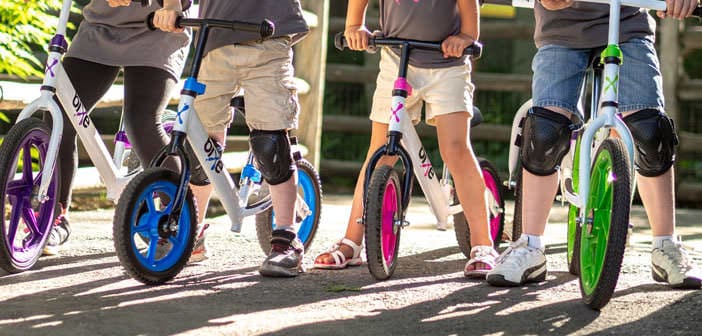The Best Balance Bikes for Kids to Play Outdoors
The Balance Bike for children is a fun game at home and outdoors. Suitable for children aged two and up, they develop a sense of balance and prepare them for the classic bicycle.
Pushbikes are available in many types, materials, colors, and prices. This guide shows how to choose the best balance bike for children and the best products today.
Learning to ride a bicycle is a fundamental step for a child’s growth. The bike gives autonomy and freedom and drives you to socialize outdoors with other children. Before riding a bicycle, perhaps with the support of rear wheels and different tests, the balance bikes favor the child’s natural balance development.
From 2 – 3 years of age, children learn to push with their feet to move the bicycle, and in a short time, they understand how to stay balanced on their wheels by lifting their feet forever longer distances.
Balance bikes are bikes without brakes, so children soon learn the handlebar’s use and become familiar with the distances at a reduced speed and controlled exclusively by their body movements. Once you control balance bikes, switching to a traditional bicycle will be easy, fun, and much safer.
Table of Contents
How to choose a balance bike: Types and Features
To choose the best balance bike for our child, we consider his age, whether he will use it outdoors or at home, and if we want to use it even when the child is older. We see below the most critical parameters to consider when choosing.
Balance bike and age of the child
Depending on the models, we can find a balance bike available from 18 months of the child up to 5, 6, and 7 years. Some younger children may begin to use the bike a little further towards the age of 2 and 3, as the ability to balance and walk is different from one child to another.
The child’s height is another important factor; it is necessary to purchase a bicycle that allows the child to comfortably rest his feet on the ground, regardless of his age.
Bike Weight
The weight of balance bikes is important to allow their use by younger children, so they are light, and their weight is between 5 and 15 lbs. However, the lightness and structure of the bike impose a maximum weight even on the user’s part. Therefore, for use by older children, maximum weight is indicated by the manufacturer, usually between 55 and 66 lbs. of the child, up to the more robust bikes with a capacity of up to 110 lbs.
Bike Materials
We find steel among the most resistant materials to build the frame of a balance bike. This material is generally reserved for bikes suitable for accompanying the child in growth. It can be used for a few years due to the material’s resistance to impact and wear. Another resistant material is aluminum, which has the advantage of being lighter.
Wooden bikes without pedals are generally reserved for younger children, perfect for home use. Their frame is more delicate and must keep the bike from weather and humidity. This type of bicycle usually has a lower cost. Other bike parts, such as the saddle, wheels, and handles, are plastic and rubber.
Wheels
The balance bike wheels are 10″ and 12″ or 16″ in diameter. The materials of the wheels, rubber, or other plastic types make them sliding and safe but less efficient than those of traditional bikes designed to tackle any terrain.
Unlike traditional bikes, balance bikes mainly use tubeless wheels, thus avoiding punctures and maintenance. Moreover, in high-quality models, EVA rubber wheels are more widespread, more resistant, and puncture-resistant.
Adjustable saddle
To use the bike correctly, the saddle must be adjustable in height. In this way, it can be adapted for children of different stature and exploited by the same child over the years during its growth.
The metal bicycle saddles resemble traditional bikes formed by a tube that locks at the desired height thanks to a clamp. Instead, wooden bikes allow the saddle’s adjustment in a defined number of positions using pins or screws.
Handlebar
Like the saddle, the bike handlebars must also adjust height to the child’s height. All-metal bikes generally allow adjustment of the handlebars, while most wooden balance bikes have fixed handlebars. The rubber grips must ensure a solid and non-slip grip to help control the bike. The ends are wider and wider to prevent the hands from slipping out or being injured in the event of an impact.
Accessories and Details
Balance bikes have an essential structure, but in some cases, they can include accessories such as a bell, a small storage basket, or a tripod to park them.
As for the colors, there are distinctly feminine or masculine bikes painted in pink or blue, but most of them are produced in unisex colors like yellow or green, perfect for all children.
The best balance bikes for Kids to buy
Below is the complete selection of the best balance bikes with their respective characteristics and prices.
Product prices and availability are subject to change. Therefore, any price and availability information displayed on Amazon at the time of purchase will apply to purchasing any products.

